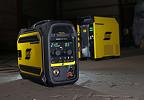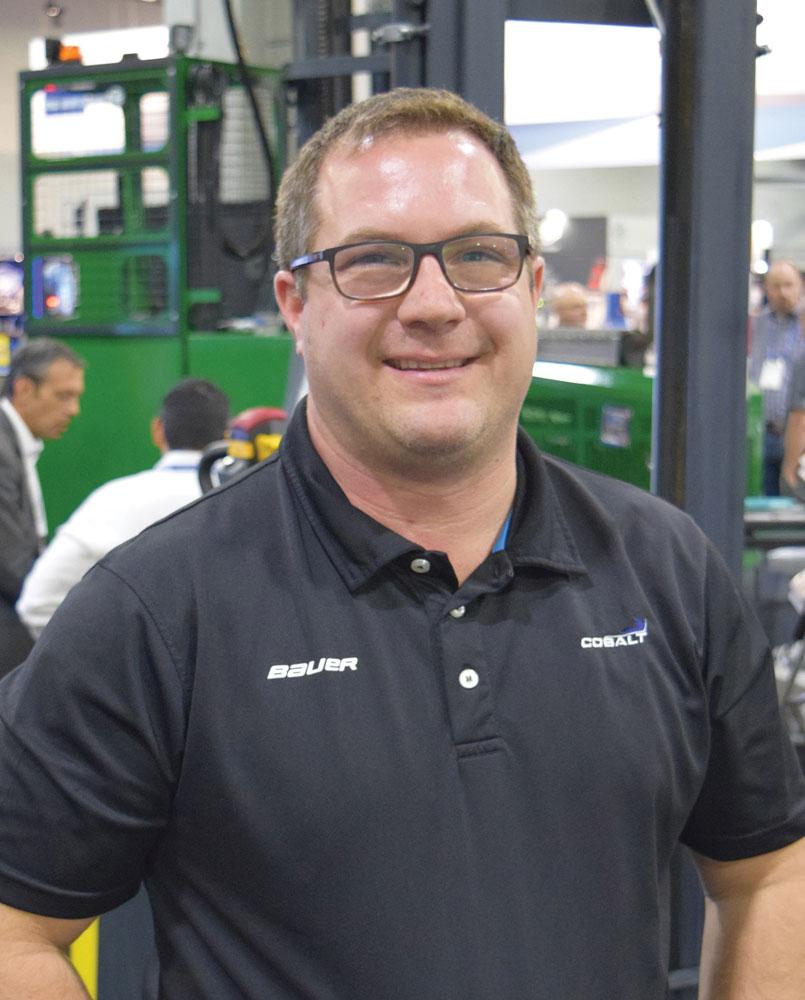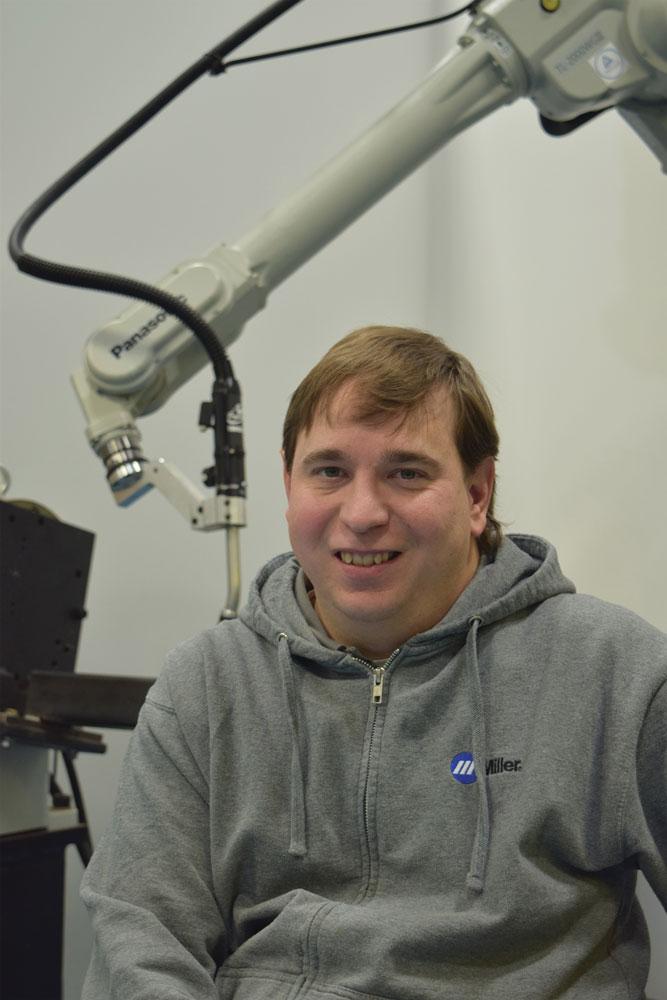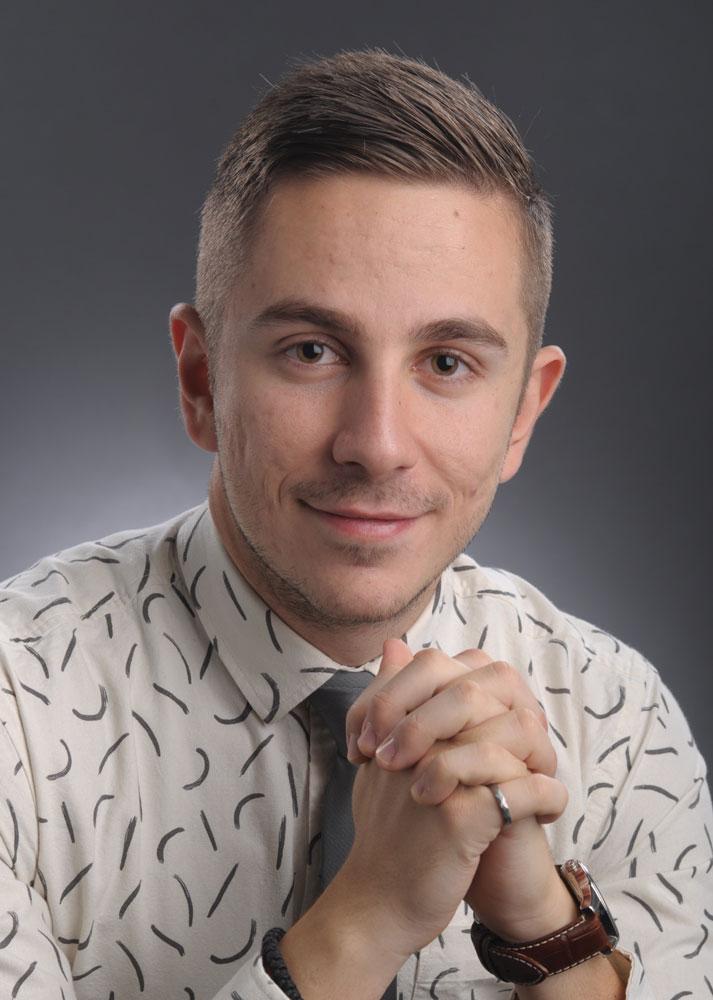Editor
- FMA
- The Fabricator
- FABTECH
- Canadian Metalworking
Next-Generation Manufacturing Leaders
The future looks bright in the hands of these up-and-coming young talents
- By Rob Colman
- December 17, 2018
- Article
- Fabricating
There used to be a perception in Canada that manufacturing was yesterday’s news, and that to get ahead young people should enter the “service” sector – banking, HR, and other “customer-centric” industries. Nobody gave a thought to who would build our cars, buildings, energy distribution networks, or appliances. Those jobs would take care of themselves.
We’ve since had to manage with a shortfall of talent in fabrication and welding, and now colleges and universities across the country are reinvesting in these programs to bolster that burgeoning need.
But through it all there have always been young people who understand the value of the trades and the importance of quality materials science and development. This month we introduce you to just a few such people. These young people have been recognized by their peers as individuals who stand out in the crowd. Some are advocates for industry. Others demonstrate the potential of the trades through their example of success.
Most importantly, all demonstrate that Canada has a bright manufacturing future if we can continue to encourage investment in talented individuals such as these.
Clint Taylor, Owner, Cobalt Industries
While still in his teens, Clint Taylor began a bean farming operation with his brother in Portage la Prairie, Man. Within 10 years he was managing a team of about 50 people, and also getting experience with the fabrication business.
“We had several journeyman welders on our team taking care of maintenance,” said Taylor. “At the same time, the type of farming we were doing required specialized equipment that was difficult to acquire, so we built that equipment ourselves.”
In 2007 Taylor pursued his management interests into manufacturing, taking on a project management position at a fabricating operation. Within a few years he had purchased the company and started the process of expanding its operations to become the business Cobalt Industries is today. When he first started working for the company, it operated out of a 1,500-sq.-ft. facility. With the addition of a 40-ft.-high, 12,000-sq.-ft. crane bay at the end of this year, Cobalt will have a 32,000-sq.-ft. footprint. This includes one 6,000-sq.-ft. building that is used strictly for stainless steel fabrication.
Cobalt primarily focuses on food industry work and small structural jobs. On the shop’s largest project to date, it was responsible for the building structure, miscellaneous interior structural jobs, process equipment installation, and process piping.
Taylor credits the challenges the industry throws at him for his continued enthusiasm for the work. “We have a tight-knit group of about 40 employees now, and working with them on the challenges presented to us by customers is exciting. The work, the creativity involved in it, it’s fun.”
The shop continues to evolve as it grows. Taylor took four team members from his shop this year to attend FABTECH® Atlanta to look at what technology is out there that might help them become even more efficient in their operations. But while machinery investments are important, Taylor believes the key to future success will be the team on the shop floor.
“At the end of the day, the guys doing the job are driving changes in the shop, so if they have ideas for changes, we always welcome that. Having that long-term relationship with the guys in the shop – some of whom have been with me for nine years – is really important. It allows us to bounce ideas around and stay creative.”
Taylor is aware that a lot of smart, young people are out there who could one day have an impact on his business. For that reason, Cobalt gets involved with high schools in their area, offering bursaries to one student a year from each school who is interested in pursuing the trades.
“While we encourage students who want to go into welding and fabricating, the bursary isn’t limited to those trades,” Taylor said. “We are invested in high school apprenticeships as well as regular apprenticeship programs. At this stage we have helped about a dozen people achieve their journeyman tickets in 10 years.”
Taylor and the Cobalt team also create design challenges for students. Last year, for instance, they challenged students to design a fire pit. The three rules were that the pit had to be fire-safe, it had to be able to be fabricated in four hours at the Cobalt shop, and you had to be able to cook on it.
“The students came up with some really incredible designs,” he said. “The winning team came to the shop for pizza and then had the opportunity to watch the process as their design went from drawing to a finished product over the course of four hours. It gave them an appreciation of how the manufacturing process works. They then took the fire pit away with them and raffled it off as a fundraiser.”
Jason Ryan, Owner, Wheels Training & Consulting
Jason Ryan, IWT, runs Wheels Training & Consulting in Southern Ontario as a single-man operation training people how to operate welding robots to keep production running efficiently. He has both trained people in offline robot programming and performed such programming services for a variety of businesses, including automotive suppliers.
Ryan got a taste for welding growing up on his parent’s farm in Seaforth, Ont.
“My dad was a self-taught welder, so I learned a lot from him,” said Ryan. “Then, in high school, I took shop classes and did a lot of welding. I was always more interested in the fabricating side of those classes than anything else.”
Ryan was a month and a half into his college welding course when he was in a car accident and was paralyzed from the waist down. He spent a year in recovery and rehab, but after that he decided to continue to pursue his interest in welding.
“There was a guy I met who worked at an automotive company who’d been paralyzed after achieving his welding engineering technologist designation,” Ryan said. “The administrators were questioning whether I could complete the welding course in a wheelchair because it had never been done before. He said absolutely I could, and so I did the three-year program at Conestoga College, and that’s how I started out in the industry. I kept on pursuing welding because I liked it and was always good at it.”
Ryan had the chance to pay that support forward years later when his doctor told him about someone else in the Stratford area who was paralyzed as the result of an accident and was considering the welding trade. Ryan was able to offer him support and advice.
“He was just going to do hands-on welding and I said, ‘You want to go further. You’re not going to want to weld for the rest of your life by hand in a wheelchair,’” he said.
Not that robotics training gave Ryan an instance pass into the industry. He faced prejudice at the beginning.
“I went on a lot of interviews, but the minute they saw me, you could tell they didn’t think I could do the work,” said Ryan. “It’s true that I couldn’t go into an automotive plant as a maintenance person and climb all over the equipment, but there’s plenty that I could and can do.”
Ryan credits his involvement in the CWB Association with landing his first job. He was heavily involved in the association straight out of college, and it was through those connections that he got a job at Panasonic in its robotic welding business. It was after he was let go from Panasonic that Ryan launched his own business, which included offering his services to the Miller Electric team when they became the exclusive distributor of Panasonic robots in North America. That is now his primary customer. He schedules startups and installs of robot cells that are sold in the U.S. and Canada, as well as provides training to Miller customers.
What keeps him enthusiastic about the industry is the constantly changing technology.
“Like any other technical industry, it’s remarkable how much more robots can do compared to when I first started my career,” said Ryan. “It’s amazing to see how easy it is to program the most complicated welding jobs, and to do so offline. That keeps me excited, as does the ever-changing welding applications and the variety of joining methods that are being developed.”
Ryan also continues to give back to the industry by serving the CWB Association. He served previously as the chair of the national organization, spent two years writing regularly for the Welding Journal, and now serves as treasurer of the Golden Triangle Chapter.
“My advice to young people entering the industry is to get involved with the association,” said Ryan. “This industry is all about networking. If you’re in the industry and you network effectively, you’ll always have work because everybody will know you.”
Nairn Barnes, PhD, Welding Engineer in Training, Supreme Steel
Nairn Barnes first realized he had a future in manufacturing during his third year of undergrad studies at the University of Alberta. He attended a tour of the university’s Canadian Centre for Welding and Joining and was infected by the enthusiasm of the centre’s director, Professor Patricio Mendez.
“I was in the third year of my materials engineering degree at the time and Patricio got me involved in doing some undergrad research in welding and joining,” said Barnes. “I didn’t know what I wanted to do at the time, and he drew me into this work that I found fascinating.”
But Barnes didn’t just find a course of study to pursue, he found a community that he keenly engaged in. During his tenure at the university, he served in every executive position in the CWB/AWS student chapter.
Since graduation Barnes has gone on to serve on the Technical Papers Committee for the AWS, the IIW Young Leaders Task Group, and is currently serving as the CWBA Edmonton Chapter’s treasurer.
Straight after defending his PhD in materials engineering, Barnes joined Supreme Steel in Edmonton, Alta., one of the largest fabricators and erectors in western Canada. His responsibilities include creating and monitoring welding procedures, as well as troubleshooting for the production team, both in the shop and in the field, with repairs and general welding issues.
One of the interesting jobs he has been involved with recently is Seattle’s Rainier Square Tower. The tower is being built using a “radical” shear wall core system that will accelerate construction by as much as 100 days. The construction uses steel box frames that are filled with concrete and reinforced with anchor rods that extend out of the column through a steel plate to secure the concrete. The rod then needs to be welded to the plate.
“Welding automation isn’t really an option on much of the work we do, but the CEO of Supreme came up with a design to automate this 8-mm fillet weld,” said Barnes. “The anchor system for the automated welder has four pillars between which sits a rotating arm that holds the welding head. The system can weld the fillet in 12 seconds and requires essentially no changeover time. A manual weld would take 20-30 seconds and require changeover time. There are over 300,000 anchor rods in the building, so the time savings really add up.”
Barnes was pivotal in helping to tweak the welding parameters to make this concept run without a hitch.
What drives Nairn Barnes right now is the variety of work his career allows him to explore.
“I get to see all of the projects Supreme works on, and I have the opportunity to have a hand in many of them, which presents an awesome challenge and opportunity for learning.”
Bailey McKendrick, Journeyman Welder
Bailey McKendrick currently works as a pipe welder through Local 46 pipefitters union. McKendrick first discovered welding in shop class in high school.
“I had no idea what welding was,” she said. “My teacher was making a demolition derby car and asked me to weld it shut. When I hit that trigger and the first spark flew, I fell in love.”
It took McKendrick some time before realizing that welding was a potential career, though. She finished three years of university in the arts before understanding that she wasn’t on the right path. Shortly thereafter she completed a one-year course in welding at Fleming College in Peterborough, Ont.
“I had a hard time finding work coming out of the program,” she said. “As a woman in the trades, you can get a lot of pushback. A lot of people didn’t want to hire me. But I eventually landed a job in a fabrication shop doing MIG welding.”
McKendrick has since landed tickets for a number of different welding capabilities.
“Since joining the union I’ve had more and better opportunities to get tickets through them, which is amazing because it makes me more valuable as an employee,” she said.
McKendrick thrives in adversity. She readily admits that she never even thought of pipe welding as an option until someone told her she couldn’t do it. She’s become used to hitting barriers and getting beyond them.
“Even now there are some men who just don’t want a woman working on their crew,” she said. “Things have improved since I started in the industry, for sure, but there is still some way to go before women are accepted on all job sites.”
McKendrick sees it as their loss if a crew rejects her.
“Compared to a lot of welders, I’m tiny, so it’s a little easier for me to get to those tough-to-reach welding jobs, which is what a lot of pipe work is.”
McKendrick’s love of the industry and determination to succeed – and help others succeed – has pushed her to become an ambassador in schools through KickAss Careers, an organization that sends professional tradespeople into schools to teach students about the opportunities available in a variety of trades.
“Jamie McMillan, one of the co-founders of the organization, is a role model for me,” she said. “When I first heard her speak, I didn’t even know about boilermaking and ironworkers. Meeting her was like meeting a celebrity, and she saw something in me I couldn’t see myself. Going to speak in a school myself, it was nice to think that I could be a role model for someone else. I wish I had had someone like that to guide me in high school.”
The opportunity to keep learning continues to drive McKendrick.
“I love what I do, I love welding. I found it, and I’ve gotten better at it, but I still have a lot to learn, and that keeps me motivated. People telling me ‘no’ fuels my fire.”
Igor Ruvinov, Mechatronics Engineer, Smarter Alloys
Igor Ruvinov recently completed his master’s degree at University of Waterloo through a Mitacs Canada program placement with Smarter Alloys, where Ruvinov continues to work. Mitacs is a non-profit, national research organization that manages and funds research and training programs for students in partnership with universities and industry. The program allowed Ruvinov to complete a master’s degree while doing research at Smarter Alloys.
Smarter Alloys is a Waterloo, Ont., company focused on the development of shape memory alloys, materials that you can deform but that return to their original shape when heated to a certain temperature. This technology is being applied in various industries, including medical, dental, and automotive. In the automotive sphere, it’s one key component in lightweighting efforts.
“What the company does, in part, is take a shape memory alloy and laser process sections of it,” explained Ruvinov. “The laser processing modifies the properties of that section. What this means is that different sections of the material are transformed at different temperatures. It’s as if you’d welded a variety of metals together. Smarter Alloys then develops systems and technologies based on that material.”
Ruvinov, for his part, designed and built a mechanical testing system that collects material response data for shape memory alloys and used a neural network to develop a sensorless position and force estimation model for the use of the alloys in manufacturing and actively controlled systems.
“I’ve been working on various active applications of the material, so my master’s focused on controls. These alloys are very hard to control accurately. The benefits of the material include that it’s very lightweight and inexpensive. We don’t want to have to add sensors that will increase the complexity or the cost. Achieving sensorless accurate control of shape memory alloys was important for the company.”
Ruvinov decided to pursue this industrial-type master’s so he could be hands-on in industry.
“I was debating between doing a regular or course-based master’s and going into industry,” he said. “My undergrad was in nanotechnology, which gave me broad knowledge in a lot of fields and I wanted to specialize more. I chose an industrial path because I wanted to work on real-world projects that are being pursued to be applied. I did some research in undergrad, worked in labs, and things just moved too slowly for me, things took too long to be applied. I thought I’d be able to achieve a lot more with an industrial master’s, and that turned out to be the case. It was exactly what I was hoping for.”
Working for Smarter Alloys continues to be an extension of this interest.
“One of the things I love the most about the job is that we’re developing these systems in-house, so I have my hands dirty creating software for the systems, we do the electronic controls, we make custom PCBs, we do the mechanical design, we fabricate the materials, we characterize everything, we create these full solutions in-house,” he explained. “Another great thing is that it’s not a huge company and I get a significant amount of responsibility, so I get a chance to work on many different aspects of the work in the same week. The amount of knowledge we have and are continuously gaining is amazing.”
Editor Robert Colman can be reached at rcolman@canadianfabweld.com.
About the Author

Rob Colman
1154 Warden Avenue
Toronto, M1R 0A1 Canada
905-235-0471
Robert Colman has worked as a writer and editor for more than 25 years, covering the needs of a variety of trades. He has been dedicated to the metalworking industry for the past 13 years, serving as editor for Metalworking Production & Purchasing (MP&P) and, since January 2016, the editor of Canadian Fabricating & Welding. He graduated with a B.A. degree from McGill University and a Master’s degree from UBC.
subscribe now


Keep up to date with the latest news, events, and technology for all things metal from our pair of monthly magazines written specifically for Canadian manufacturers!
Start Your Free Subscription- Trending Articles
CWB Group launches full-cycle assessment and training program

Achieving success with mechanized plasma cutting

3D laser tube cutting system available in 3, 4, or 5 kW

Brushless copper tubing cutter adjusts to ODs up to 2-1/8 in.

Welding system features four advanced MIG/MAG WeldModes

- Industry Events
MME Winnipeg
- April 30, 2024
- Winnipeg, ON Canada
CTMA Economic Uncertainty: Helping You Navigate Windsor Seminar
- April 30, 2024
- Windsor, ON Canada
CTMA Economic Uncertainty: Helping You Navigate Kitchener Seminar
- May 2, 2024
- Kitchener, ON Canada
Automate 2024
- May 6 - 9, 2024
- Chicago, IL
ANCA Open House
- May 7 - 8, 2024
- Wixom, MI





















